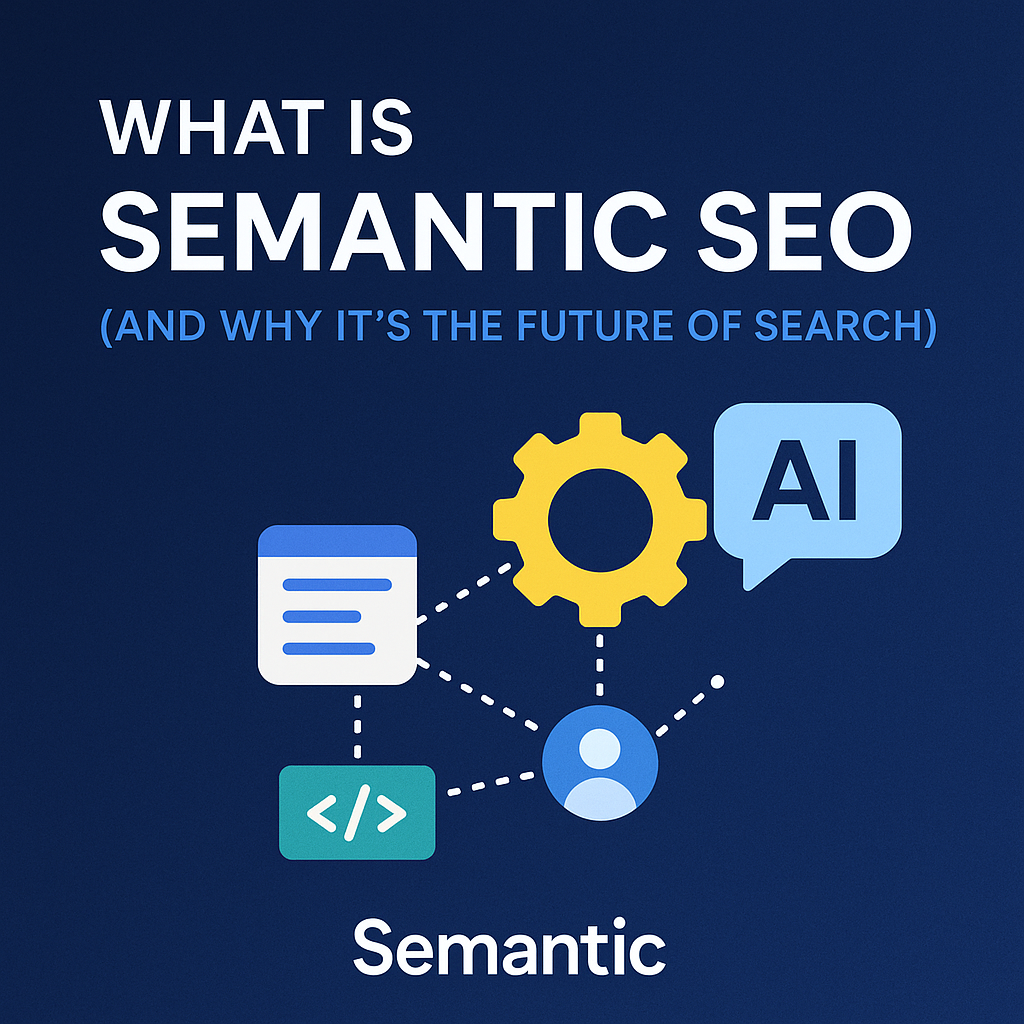Search engines have evolved. Traditional SEO tactics - like keyword stuffing or backlink chasing - aren’t enough to keep up with how AI-powered systems like Google Search, Bing, and ChatGPT interpret content today. That’s where Semantic SEO comes in.
At Semantic, we believe Semantic SEO isn’t just a buzzword. It’s a foundational shift in how content is discovered, understood, and ranked by AI - and our WordPress Plugin is built to help you stay ahead of that curve.
In this guide, we’ll explain what Semantic SEO really means, why it matters for AI optimisation, and how to use it to future-proof your content strategy.
Semantic SEO Defined
Semantic SEO is the practice of writing and structuring content in a way that helps search engines understand meaning - not just keywords.
Rather than relying on exact-match terms like “best coffee shop London”, Semantic SEO encourages content that builds topical depth, connects to related concepts (e.g., barista skills, third-wave coffee, or latte art), and explains entities clearly - like brands, people, places, and products.
By doing so, your content becomes more aligned with how AI models like ChatGPT or Google’s Search Generative Experience (SGE) extract and present information.
🧠 Think of it like this: Search is no longer matching strings of characters. It’s matching meanings, relationships, and context.
Why Semantic SEO Is Critical for AI Search
Generative AI is changing how people find answers online. Instead of visiting 10 blue links, users ask ChatGPT, Claude, or Perplexity - and expect full, confident summaries pulled from high-authority sources.
If your content isn’t machine-readable, entity-rich, and context-aware, it may be invisible in these AI-generated results.
We covered this in-depth in How to Rank in ChatGPT (and Other AI Results), where we explore how content is selected by language models- and what site owners can do to stay visible.
One of the key takeaways? Entities and structured data matter more than ever.
The Role of Entities in Semantic SEO
In Semantic SEO, entities are the building blocks of meaning.
📌 An entity is a uniquely identifiable thing - like Elon Musk, WordPress, or Semantic SEO. It can be a person, place, product, organization, or concept.
By mentioning, linking, and structuring your content around relevant entities, you give AI systems a clear map of what your page is about - which improves both ranking and understanding.
For a deeper dive into how this works, check out our post:
👉 Why Entities Are the Secret to Better AI Optimisation (and How to Use Them)
How to Optimise for Semantic SEO (in WordPress)
If you’re a WordPress user, implementing Semantic SEO might sound intimidating - but it doesn’t have to be.
Our Semantic WordPress Plugin is designed to make AI optimisation effortless. Here’s how it works:
✅ Automatic Entity Detection
The plugin scans your post content and automatically identifies key entities worth highlighting or adding schema for.
✅ Contextual Schema Markup
It applies the right schema.org structured data - such as Person, Organization, SoftwareApplication, or Article - based on the content and entities detected.
✅ Internal Linking Suggestions
Semantic SEO isn’t just about individual pages—it’s about topical connections. Our plugin suggests smart internal links based on entities, helping build a tightly connected, crawlable content graph.
✅ AI Visibility Testing
See how your page performs in AI-generated results, and get tips for improving your content’s machine-readability.
Whether you’re writing about local businesses, products, or educational content, Semantic ensures your content is understood, classified, and recommended by AI.
Semantic SEO vs Traditional SEO
| Traditional SEO | Semantic SEO |
|---|---|
| Keyword-focused | Topic and entity-focused |
| Optimises for search engines | Optimises for AI and human context |
| Manual internal linking | Contextual and entity-based linking |
| Basic schema markup (if any) | Deep, contextual structured data |
| Fragmented content | Thematic content with strong cohesion |
3 Real Benefits of Semantic SEO
1. Increased Visibility in AI Results
Being “the answer” in ChatGPT, SGE, or Bing Copilot often depends on whether your content is structured and entity-rich.
2. Stronger Topical Authority
By building a semantic network of content around a subject, you signal authority and expertise to both users and machines.
3. Future-Proofing Your SEO
AI-driven results are only becoming more prominent. Semantic SEO gives your content staying power - regardless of algorithm updates.
Semantic SEO in Action: A Quick Example
Let’s say you’re writing a guide on how to build an online store. Instead of just focusing on the keyword “build online store,” you might include:
-
Entities like Shopify, WooCommerce, payment gateways, and conversion rate
-
Schema markup for Product, HowTo, and FAQ
-
Internal links to related posts like shipping optimisation, checkout UX, or customer retention strategies
With Semantic, our plugin detects these entities, recommends markup, and helps build a web of meaning around your topic - making it easier for AI to understand and recommend.
Conclusion: Semantic SEO Isn’t Optional Anymore
If your content isn’t semantically optimised, it risks becoming invisible to AI.
Semantic SEO is more than technical markup or keyword tweaks - it’s about clarifying meaning, building relationships, and helping AI systems trust your content. And with the right tools - like the Semantic WordPress Plugin - anyone can do it.
Ready to take control of your visibility in AI-driven search?
